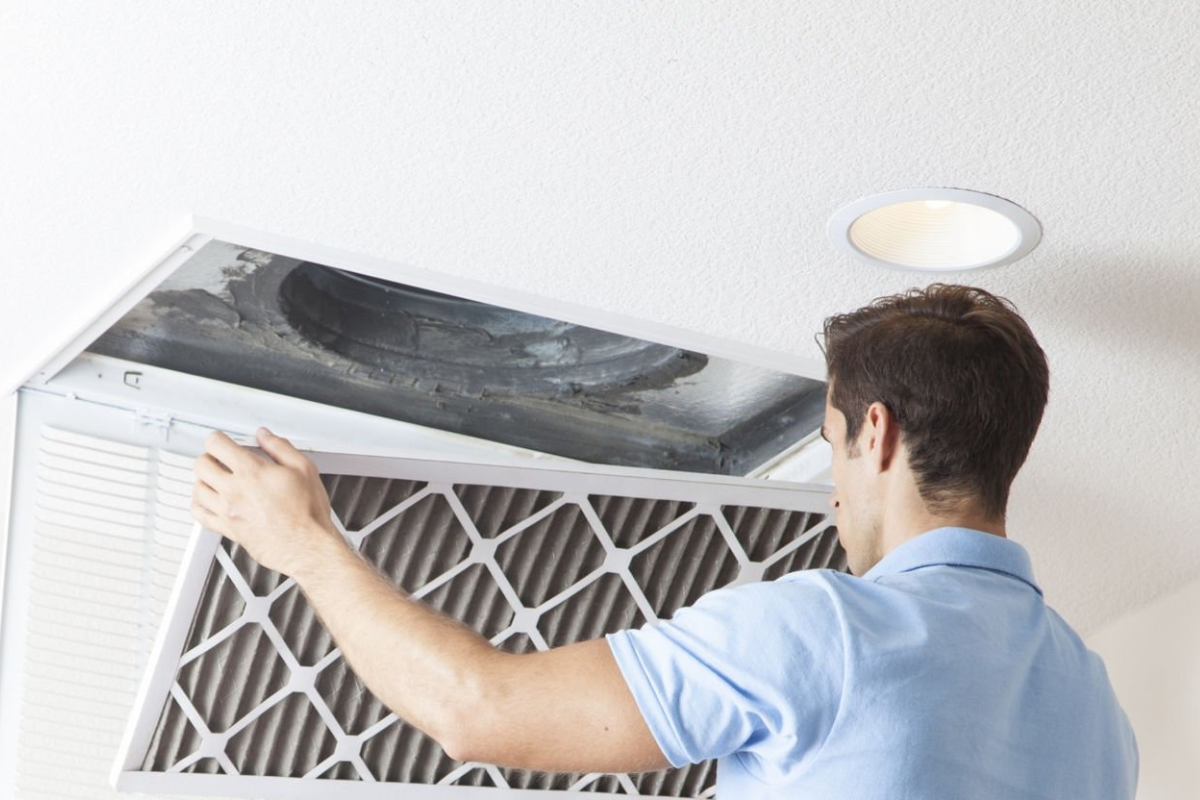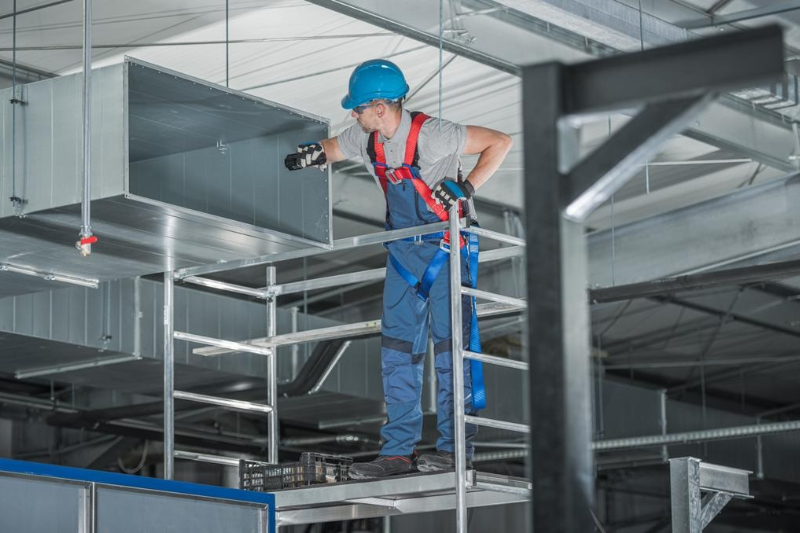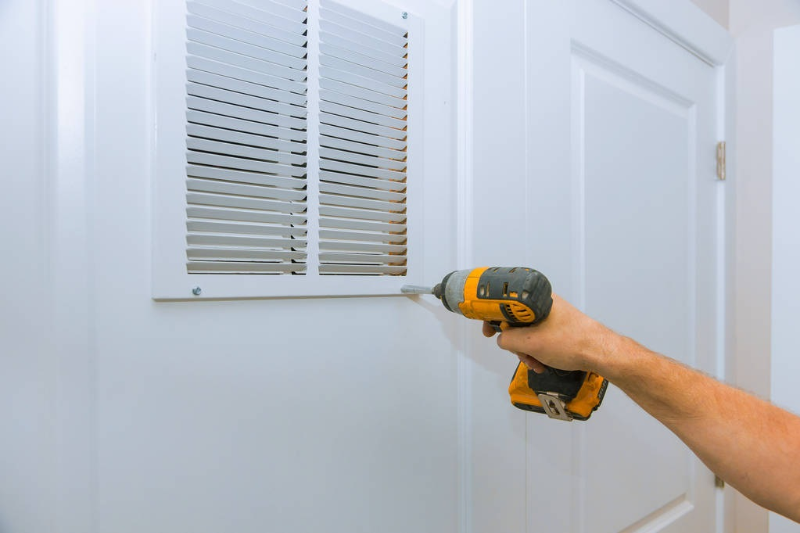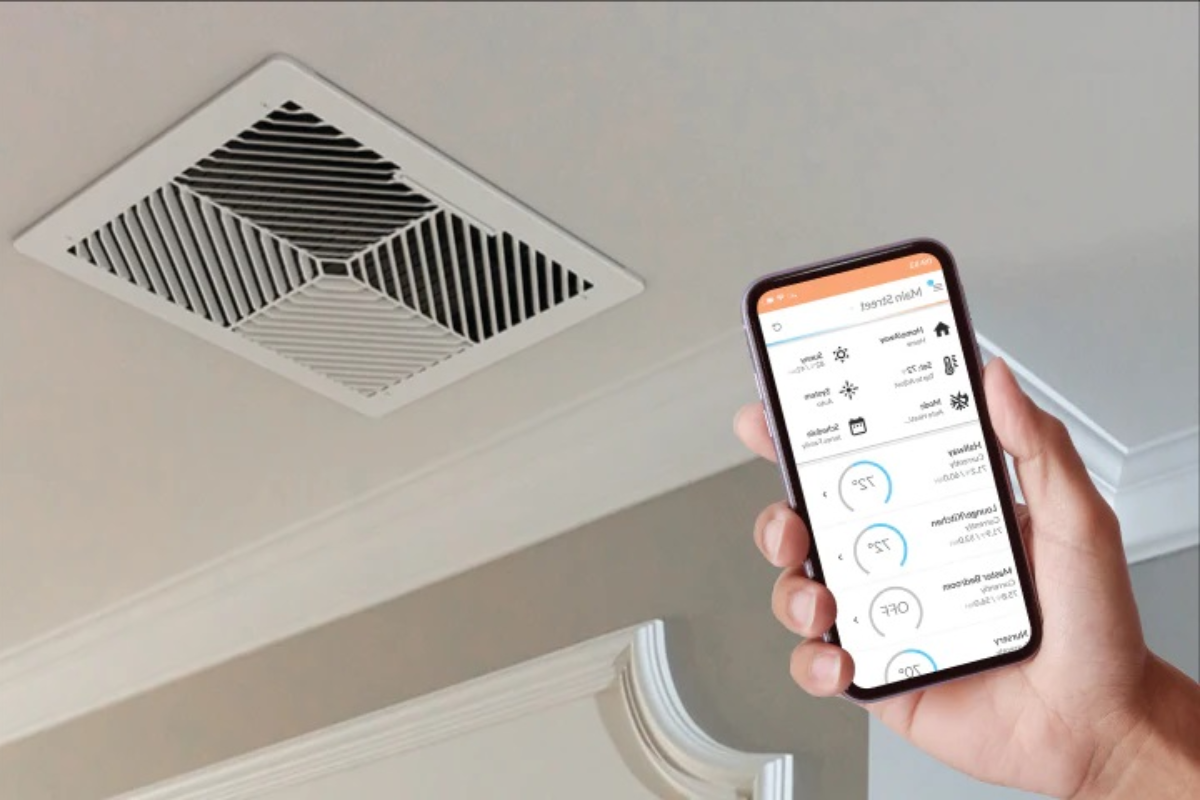Table Of Contents
Optimising the positioning of your air conditioning vents is more than a minor detail; it’s a critical factor in ensuring your system operates efficiently and provides maximum comfort. Whether in a cosy residential space or a sprawling commercial property, the correct placement of vents can transform the functionality of your air conditioning system.
This guide explores the principles of airflow dynamics, practical tips for various environments, and the newest innovations driving HVAC efficiency forward. It will help you understand how to best position your vents for improved air quality, energy savings, and overall comfort. Read on to learn more!
The science of airflow in indoor spaces

Understanding how air moves in enclosed spaces
The movement of air within a room is influenced by its layout, furniture placement, and architectural features that can either hinder or enhance airflow. Properly positioned air vents facilitate a natural flow that disperses air evenly throughout the room, eliminating hot or cold areas and promoting a more comfortable environment.
The role of vent placement in optimising airflow
Effective vent placement should work with the room’s natural air movement patterns. Typically, this involves positioning supply vents to push air toward the centre of the room and return vents placed to pull air back toward the air conditioning system, thus promoting a continuous air circulation loop.
Effects of improper air circulation
Inadequate air circulation can lead to various problems, including discomfort, increased energy consumption, and health issues such as mould growth or aggravated allergies due to uneven air distribution and temperature fluctuations.
The basics of HVAC air distribution
Understanding your HVAC system’s design and intended air distribution strategy is essential. The system is designed to balance air intake and exhaust, achieving a steady indoor climate that is neither humid nor dry and maintaining a uniform temperature throughout the space.
How to vent positioning impacts room temperature
Placing vents in strategic locations can significantly influence room temperatures by evenly distributing cool air in summer and warm air in winter. This avoids the common problem of under-heated or overheated rooms and makes the environment more comfortable for occupants.
Factors to consider before positioning vents

Room layout and size
The configuration and size of a room directly influence where vents should be placed for optimal air distribution. Larger rooms might require multiple vents or strategically placed larger vents to ensure air reaches all areas effectively.
The location of windows and doors
Avoid placing vents near windows or doors where drafts can occur, leading to energy loss. Instead, position vents in locations that will enhance the room’s natural thermal comfort, keeping in mind the sun exposure and external heat sources that can affect temperature balance.
Sun exposure and external heat sources
Rooms with significant sun exposure may need special consideration regarding vent placement to combat the additional heat, ensuring these areas remain comfortable without overloading the air conditioning system.
Obstacles that could obstruct airflow
It’s vital to keep vents clear of obstructions like furniture, curtains, or appliances that can block airflow. This can diminish the efficiency of your AC system and cause it to work harder to maintain desired temperatures.
Typical occupancy and activity levels in the space
Areas that frequently host multiple occupants or involve heat-generating activities may require enhanced airflow to offset the additional heat produced. Adjusting vent placement or adding additional vents can help maintain a balanced room temperature under varied conditions.
Positioning vents in residential spaces

Strategic placement in larger rooms
For optimal air distribution in larger spaces, consider multiple vents or vents that are centrally located to ensure even air spread throughout the area. This strategy helps prevent the formation of stagnant air pockets and maintains consistent comfort levels for all occupants.
Avoiding common placement errors
It’s easy to inadvertently block vents with furniture or drapes or to place vents in areas that don’t align with a room’s natural airflow. Always ensure that vents are unobstructed and positioned to complement the room’s layout and usage patterns.
Balancing aesthetics and functionality
While the visual integration of vents into your living space is essential, functional considerations should take precedence: Utilise decorative grilles or clever furniture arrangements to integrate vents seamlessly into your décor without sacrificing effectiveness.
Vent placement in bedrooms and living areas
In bedrooms, vents should be placed away from direct contact with sleeping areas to avoid discomfort from drafts. The seating arrangement and activity zones in the living regions should also be considered to ensure everyone can enjoy a comfortable temperature without direct air exposure.
Considerations for multi-level homes
In homes with multiple floors, heat distribution can be challenging. Vents in upper levels should be placed to counteract the natural rise of hot air, while lower levels may require more strategically placed vents to ensure cold air distribution during warmer months.
Optimising vent placement in commercial settings

Residential vs commercial vent placement
Commercial spaces often have different air conditioning needs compared to residential areas, mainly due to their size, ceiling heights, and the varied nature of the spaces (such as open office areas, conference rooms, and lobbies). Effective vent placement must accommodate these variations to ensure uniform air temperature and quality across all regions.
Addressing varied room usage and occupancy
In commercial settings, some areas may experience fluctuating occupancy, significantly impacting thermal comfort and air quality. For example, conference rooms or lecture halls may need advanced ventilation solutions to quickly adapt to the heat load from occupants during meetings or events.
Special considerations for high-ceiling spaces
Buildings with high ceilings require a different approach to vent placement. Since hot air rises, vents at higher levels should be strategically placed to push warm air downward during colder months, and during warm months, proper exhaust vents are needed to remove hot air that accumulates at the top.
Enhancing energy efficiency in large spaces
Efficient vent placement in large commercial spaces can significantly reduce energy consumption. This involves designing an HVAC system that can effectively manage and distribute air without overextending, using zoning systems, and employing energy recovery ventilators to improve overall efficiency.
Custom solutions for unique architectural designs
Modern commercial buildings often feature unique architectural elements that can challenge standard vent placement strategies. Custom HVAC solutions might be required to address these unique features, ensuring that the system enhances the architectural integrity while providing optimal air quality and comfort.
Impact of vent placement on energy consumption

How to correct vent placement reduces energy costs
Properly positioned air vents reduce the workload on your HVAC system by optimising airflow and temperature distribution. This, in turn, lowers energy consumption, which is crucial for environmental sustainability and reducing utility bills.
Vent placement and thermostat settings
Strategic vent placement allows thermostats to take more accurate readings, allowing the HVAC system to be controlled more efficiently. This ensures that the system provides cooling or heating as needed without unnecessary energy expenditure.
Minimising energy wastage through smart vent placement
Installing vents in locations that complement the space’s natural thermal dynamics can significantly reduce energy wastage. This includes avoiding placement near windows or heat sources, where the system might overcompensate and consume excessive energy.
The role of vents in zone heating and cooling systems
Zone systems allow different building areas to be heated or cooled independently. Proper vent placement is essential in such systems to ensure that each zone is maintained at its desired temperature, enhancing both comfort and energy efficiency.
Optimising airflow to reduce HVAC load
Balancing the HVAC system by adjusting vent placements can optimise airflow and reduce the overall load on the system. This not only improves efficiency but also extends the life of the equipment by preventing overuse.
The future of air conditioning vent technology

Innovations in vent design and placement
The future of air conditioning involves advancements in vent design that promise more precise air distribution and enhanced aesthetic appeal. Innovations such as adjustable and programmable vents allow dynamic airflow control based on real-time needs.
Smart vents and automated systems
Smart vents integrate with home automation systems to adjust airflow based on occupancy, time of day, and specific user preferences. This technology allows for significant improvements in both comfort and energy efficiency.
The role of IoT in air conditioning efficiency
The Internet of Things (IoT) enables more sophisticated monitoring and control of HVAC systems. Sensors can detect conditions in real time and adjust vents automatically to maintain optimal air quality and temperature.
Predictive analytics for optimising AC systems
With predictive analytics, HVAC systems can anticipate needs and adjust operations preemptively, improving efficiency and preventing issues before they arise.
Conclusion
Positioning your air conditioning vents correctly is not just a matter of comfort—it’s a strategic decision that impacts energy efficiency, air quality, and the overall effectiveness of your HVAC system. Whether upgrading an existing setup or designing a new space, thoughtful consideration of vent placement will pay dividends in comfort and cost savings.
Investing in professional guidance for vent placement will not only enhance the comfort and efficiency of your space but also help you avoid common pitfalls that could lead to costly inefficiencies or uncomfortable indoor climates.



